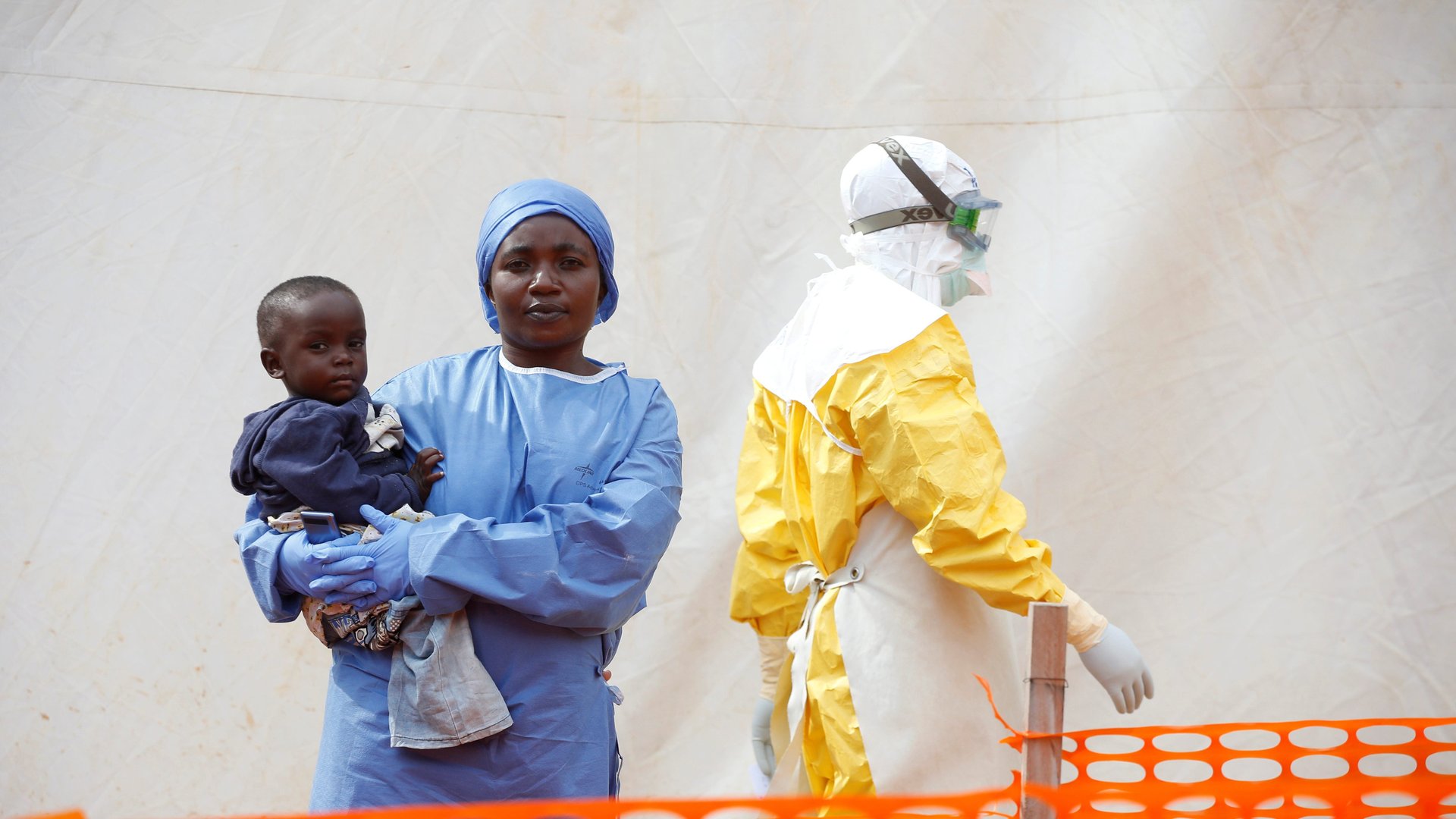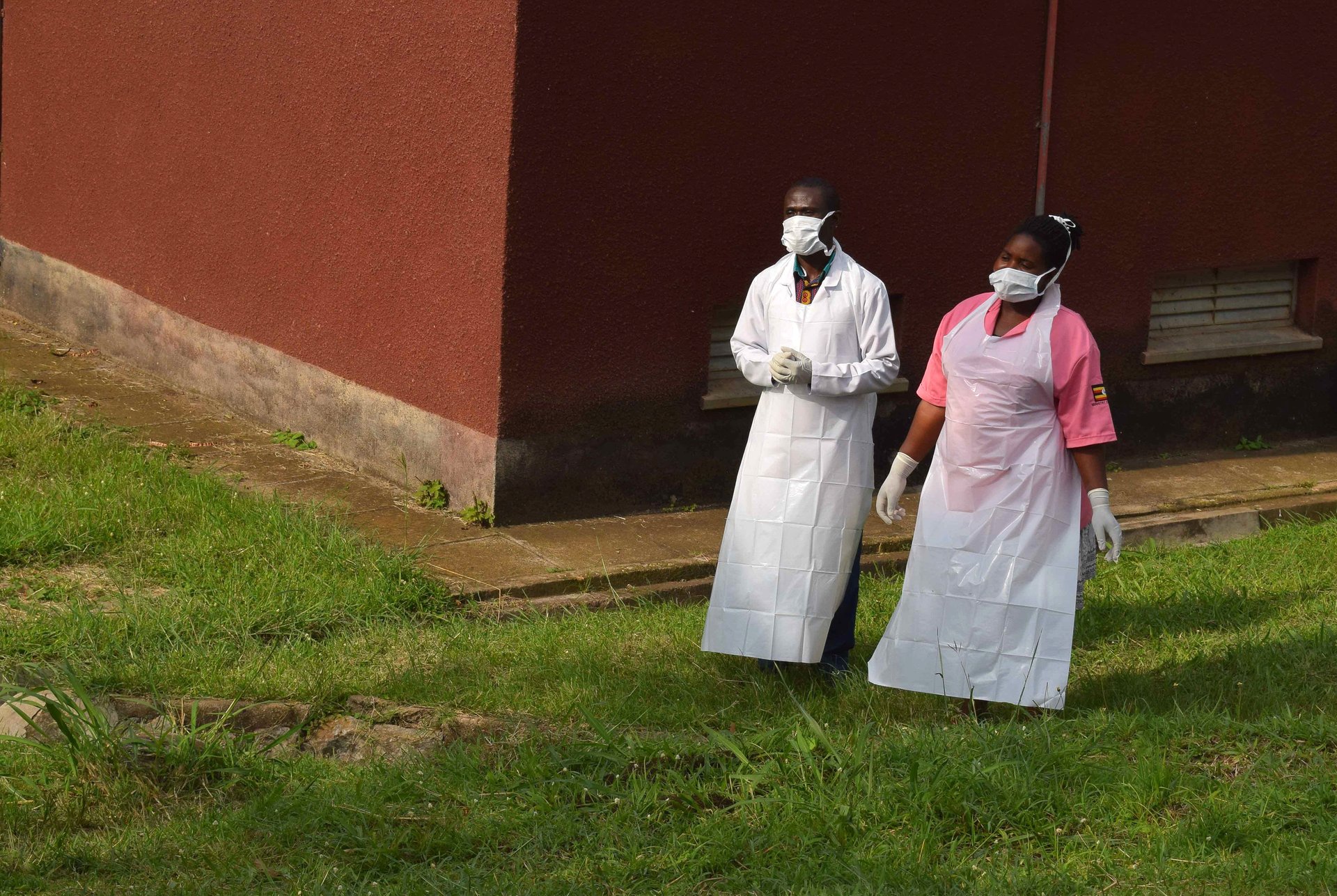As first Ebola case found in Uganda, there are questions over WHO’s reaction time
On April 12, the World Health Organization (WHO) declared for the second time in as many years that the Ebola outbreak in the North Kivu and Ituri provinces of the Democratic Republic of the Congo “does not constitute a Public Health Emergency of International Concern.”


On April 12, the World Health Organization (WHO) declared for the second time in as many years that the Ebola outbreak in the North Kivu and Ituri provinces of the Democratic Republic of the Congo “does not constitute a Public Health Emergency of International Concern.”
The declaration of a Public Health Emergency of International Concern (PHEIC) is a power granted the WHO by the member states of the International Health Regulations (IHR) of 2005. A PHEIC can be declared when a public health emergency like the current Ebola outbreak poses an international risk, regionally or even globally. In the case of the DR Congo, the fear was Ebola could spread into neighboring countries.
But on Tuesday (June 11), the Uganda’s health ministry and WHO confirmed a case of Ebola virus disease in neighboring Uganda, in a 5 year old boy who traveled with his family from the DRC on June 9th. According to Uganda’s health minister Jane Ruth Aceng, the boy died the morning on Wednesday morning, and two more cases have since been confirmed, bringing the total number to three.

Now this Ebola outbreak has spread beyond DR Congo there are real fears the disease could spread to other countries in the region including Rwanda and South Sudan.
As the decision to not declare a PHEIC faces criticism from various legal and public health experts, the specter of the West African outbreak, which peaked in 2014, hovers over it all. Nations during that outbreak, the largest in history, enacted damaging travel and trade bans not recommended by WHO. The global organization also came under intense scrutiny for waiting too long to declare a PHEIC, with the WHO’s own internal report saying there were “significant and unjustifiable delays” in the process.
The situation in DR Congo is particularly complicated. North Kivu and Ituri northeastern provinces are currently roiled by armed conflict and widespread local mistrust in the government and health workers. This security unrest has seen treatment centers burned down and health workers killed, including a Cameroonian WHO doctor. When these challenges are combined with the province’s mass displacement of people it greatly increases the difficulty of containing the outbreak and the chance it spreads to neighboring nations.
Clarion call
A public health emergency designation helps galvanize international support and funding, which supporters of a PHEIC declaration argue the DR Congo outbreak desperately needs.
“It’s a clarion call to the international community,” says Mark Eccleston-Turner, a lecturer at the School of Law at Keele University in Staffordshire, UK who authored a paper in The Lancet calling for a PHEIC to be declared. He also co-authored a paper in BMJ Global Health with Adam Kamradt-Scott of the University of Sydney criticizing the decision not to and the lack of transparency in said decision. He argues the IHR requirements, as laid out in Article 12 and detailed in Annex 2, had been met for the declaration of an international public health emergency. “The International Health Regulations require only the potential for international spread, not actual international spread.”
The WHO provided Quartz with only the previously published Emergency Committee’s April 2019 statement.
The greatest danger of a public health emergency designation seems to be the increased potential for travel and trade restrictions to be enacted which could devastate economies and worsen the situation. The Emergency Committee, in both October 2018 and this April, stated that it was “particularly important that no international travel or trade restrictions should be applied.” Such restrictions are already in place, however; in August of 2018, the Rwandan Ministry of Health announced entry screenings and potential 21 day quarantines for travelers coming from the outbreak areas.
Declaring a PHEIC would be counterproductive, DR Congo’s health ministry spokesperson Jessica Ilunga wrote in an email to Quartz. The PHEIC could cause an increase in tension with the North Kivutian population, which are predominantly traders and farmers; were international borders to be restricted after a PHEIC—the PHEIC cannot decree this; states must—their lives would be made much more difficult.
The ministry believes progress has been made in the past few weeks due to a more stable security situation and better access to the affected communities, Ilunga wrote. Their fear is a PHEIC could undo this progress.
“Even with this new case in Uganda, things remain relatively under control,” Ministry spokesperson Ilunga wrote. “This family was already followed by Congolese health authorities and, when they crossed the borders, Ugandan authorities found them and isolated them in less than 24 hours. So the risk of spread in Uganda beyond that family is limited.”
Sign up to the Quartz Africa Weekly Brief here for news and analysis on African business, tech and innovation in your inbox